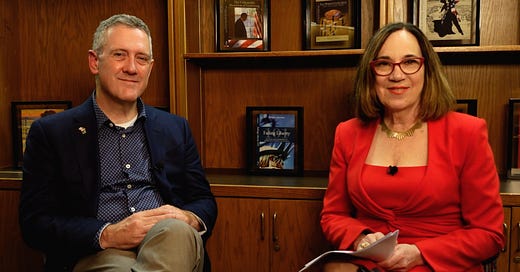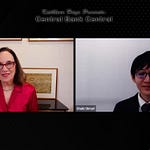Jim Bullard still sees a 25pbs rate cut next month. Not because the labor market side of the dual mandate is weak, and needs another rate cut to shore it up. Instead he says this is about the Fed funds rate still being at a level that is too high as inflation has come down, and needs to be cut in order prevent policy from being too tight.
We sat down to look at the Fed’s past, current and policy path at the Hoover Institution where the Shadow Open Market Committee gathered to commemorate its 50th Anniversary. No doubt an extra special event for Jim after he he joined the SOMC earlier this year and looks forward to pursuing his passion for research there.
Hear why Jim says the Fed’s 50bps rate cut created a communications challenge for Chair Jay Powell. What he thinks will drive the Fed’s coming frame work review.
And why he thinks coming rate cuts are not about an economy that is too weak, but about preventing this from happening and to move policy back toward normalcy.
James “Jim” Bullard is the former president and CEO of the Federal Reserve Bank of St. Louis. He became president on April 1, 2008, succeeding William Poole. On July 13, 2023, he announced he would be leaving the St. Louis Fed effective Aug. 14, 2023, to become the inaugural dean of the Mitchell E. Daniels, Jr. School of Business at Purdue University, effective Aug. 15, 2023.
Bullard is a noted economist and scholar, and his positions are founded on research-based thinking and an intellectual openness to new theories and explanations. As a participant on the Federal Open Market Committee, he was often an early voice for change.













Share this post